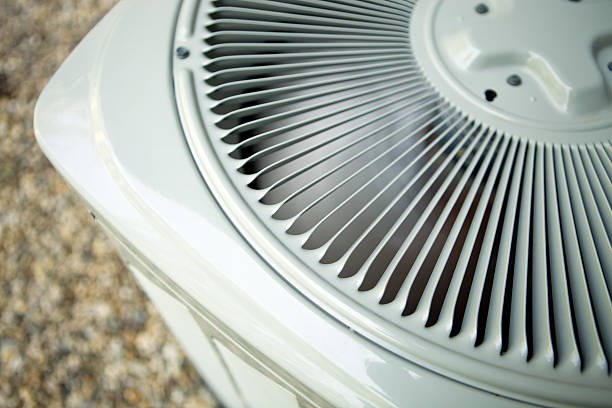In regions with cold climates, air conditioners often encounter frost buildup on their outdoor units during the heating season. This frost accumulation can impair the unit’s efficiency and performance, leading to malfunctions and reduced heating capacity. To mitigate this issue, air conditioners are equipped with defrosting mechanisms designed to remove frost and ice buildup from the outdoor unit. In this article, we’ll provide an overview of the defrosting process of air conditioners, explore the causes of malfunctions, and discuss potential solutions to ensure optimal performance.
The Defrosting Process
Detection of Frost Accumulation:
The defrosting process is initiated when the air conditioner detects frost accumulation on the outdoor unit’s coils. Sensors or control boards monitor temperature and humidity levels to determine when frost buildup exceeds a certain threshold, signaling the need for defrosting.
Activation of Defrost Mode:
Upon detecting frost accumulation, the air conditioner switches to defrost mode, temporarily reversing the refrigerant flow to heat the outdoor coils. This reversal causes the outdoor coils to become warmer than the surrounding air, melting the frost and ice buildup.
Drainage of Melted Ice:
As the frost and ice melt, the water drains away from the outdoor unit through drainage channels or pipes. Proper drainage is essential to prevent water accumulation and refreezing, which can damage the unit and impede airflow.
Resumption of Normal Operation:
Once the defrosting process is complete and the outdoor coils are clear of frost and ice, the air conditioner resumes normal operation, providing efficient heating or cooling as needed.
Causes of Defrosting Malfunctions
Inadequate Heat Supply:
Inefficient defrosting may occur if there is insufficient heat supply to melt the frost and ice buildup on the outdoor coils. This can be caused by factors such as low refrigerant levels, dirty or obstructed coils, malfunctioning defrost sensors, or faulty heating elements.
Improper Timing or Duration:
Defrosting malfunctions may occur if the timing or duration of the defrost cycle is not properly calibrated. If the defrost cycle is too short or too frequent, it may not effectively melt all the frost and ice buildup, leading to incomplete defrosting and reduced heating capacity.
Drainage Issues:
Poor drainage can result in water accumulation around the outdoor unit, which can refreeze and obstruct airflow. Common drainage issues include clogged drainage channels or pipes, improper slope or alignment of drainage components, or insufficient drainage capacity to handle melted ice.
Environmental Factors:
Extreme weather conditions, such as heavy snowfall, freezing rain, or prolonged periods of low temperatures, can exacerbate frost accumulation and impede the effectiveness of the defrosting process. In regions with severe winter weather, air conditioners may require additional defrosting measures or modifications to ensure optimal performance.
Electrical or Mechanical Failures:
Defrosting malfunctions can also occur due to electrical or mechanical failures within the air conditioner system. This includes issues such as malfunctioning defrost control boards, damaged wiring or connectors, faulty temperature sensors, or worn-out heating elements.
Solutions to Defrosting Malfunctions
Routine Maintenance:
Regular maintenance is essential for preventing defrosting malfunctions and ensuring optimal air conditioner performance. Schedule annual maintenance checks with a qualified HVAC technician to inspect and clean the outdoor unit, check refrigerant levels, and test defrosting components for proper operation.
Clear Obstructions:
Keep the area around the outdoor unit clear of snow, ice, leaves, debris, and other obstructions that can impede airflow and hinder the defrosting process. Trim vegetation and remove obstacles to ensure adequate airflow and drainage around the unit.
Clean Coils:
Regularly clean the outdoor coils to remove dirt, dust, pollen, and other contaminants that can impair heat transfer and reduce the effectiveness of the defrosting process. Use a soft brush or fin comb to gently clean the coils and remove any buildup.
Check Drainage System:
Inspect the drainage channels, pipes, and drip pans for clogs, leaks, or damage that may impede water drainage from the outdoor unit. Clear any obstructions and ensure that drainage components are properly aligned and sloped to facilitate water flow away from the unit.
Test Defrosting Components:
Test the defrost control board, temperature sensors, heating elements, and other defrosting components for proper operation. Replace any faulty or damaged components as needed to restore the functionality of the defrosting system.
The defrosting process is essential for maintaining the efficiency and performance of air conditioners, especially in cold climates where frost accumulation is common. By understanding the defrosting process and the potential causes of malfunctions, homeowners can take proactive measures to prevent issues and ensure optimal air conditioner operation. Regular maintenance, proper drainage, clear obstructions, and testing of defrosting components are key steps to mitigate defrosting malfunctions and maintain comfort and efficiency year-round. Consult with a qualified HVAC technician for professional maintenance and repairs to address defrosting issues and ensure reliable operation of your air conditioning system.
Don’t delay your air conditioner repair. Do not forget that repairing is much easier and cheaper immediately after a breakdown occurs. If your air conditioner is working, but making strange noises or not cooling the room enough, it means it’s time to contact the technicians.
Don’t wait until the air conditioner is completely out of order. In the case of untimely repairs, there is a very high possibility that a long complex repair will be required. Even a few days without air conditioning in the summer heat in San Diego County, CA will bring great discomfort to the whole family. But by calling the masters from SDAC Heating & Air Conditioning you can avoid this problem.
Contact us
